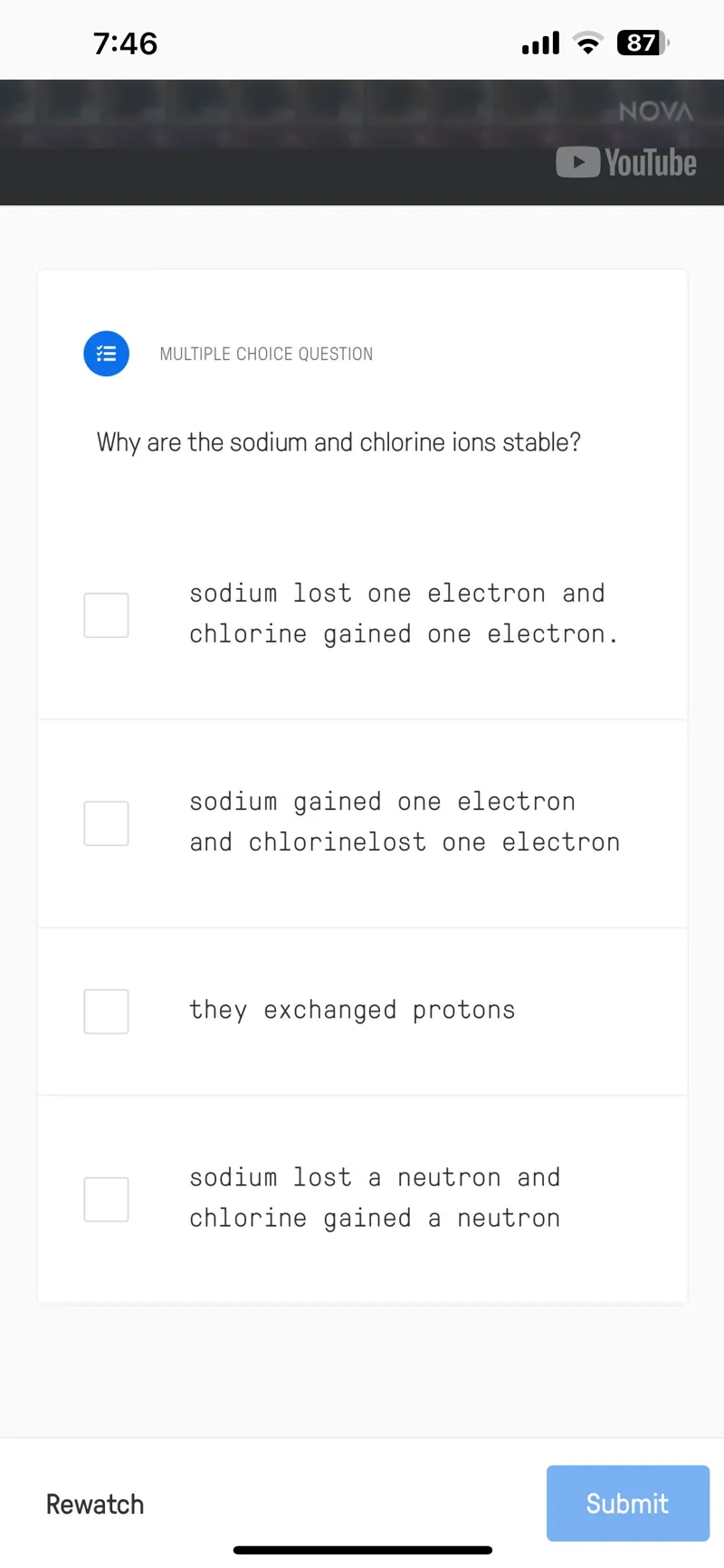Questions: Why are the sodium and chlorine ions stable? sodium lost one electron and chlorine gained one electron. sodium gained one electron and chlorinelost one electron they exchanged protons sodium lost a neutron and chlorine gained a neutron

Transcript text: Why are the sodium and chlorine ions stable?
sodium lost one electron and chlorine gained one electron.
sodium gained one electron and chlorinelost one electron
they exchanged protons
sodium lost a neutron and chlorine gained a neutron





